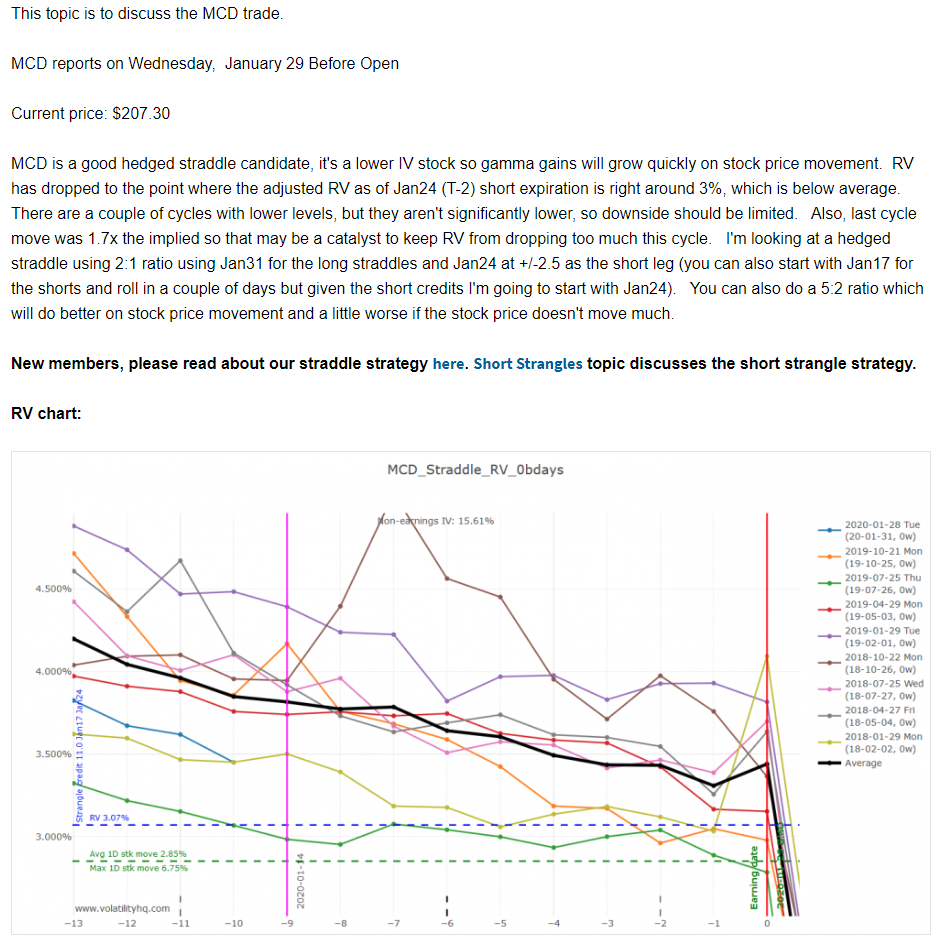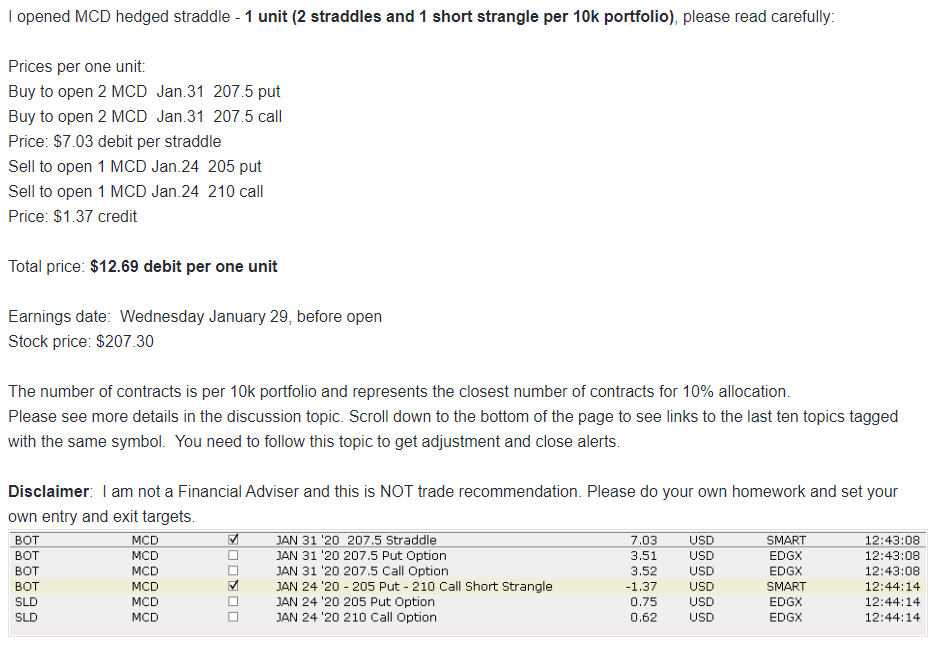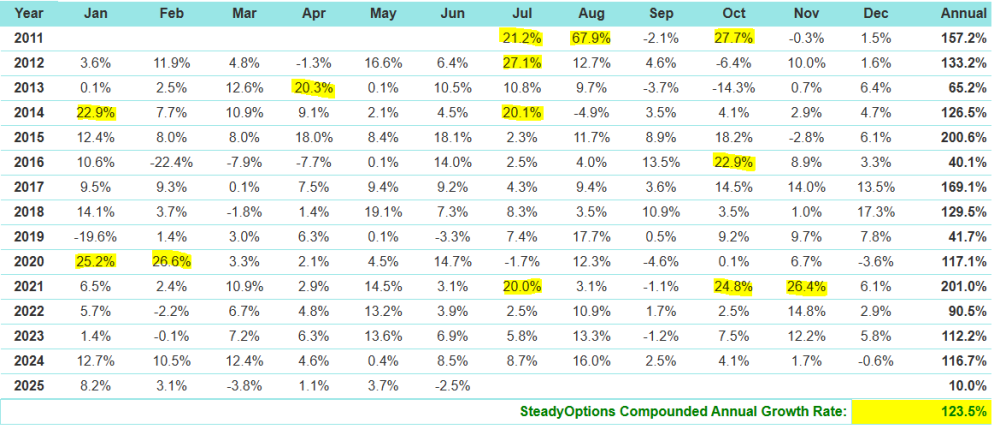SteadyOptions is an options trading forum where you can find solutions from top options traders. Join Us!
We’ve all been there… researching options strategies and unable to find the answers we’re looking for. SteadyOptions has your solution.
Leaderboard
Popular Content
Showing content with the highest reputation since 11/28/25 in all areas
-
As all our American friends are recovering from their dinners and drinks, a bit of light humour on this Monday. A friend of mine knew I was an active trader and asked whether I could share my portfolio with him and we could then discuss it. To be fair to him, he was a complete newbie and I restricted myself to sharing my shares portfolio explaining that the options bit is perhaps a bit complicated. The idea was that we would talk about it and how to build a balanced portfolio, again credit to him he took it seriously and researched the companies in my portfolio perhaps further than even I had. He therefore came prepared with his homework for our discussion this weekend and proudly laid out what he found, prefacing it with: "I researched all the companies in your portfolio, there is just one I had an issue with: ALPHABET, I googled it but can't find out which company it is."10 points
-
Steady VIX 2025 Strategy Performance vs. SPY The Steady VIX 2025 strategy outperformed SPY in 2025 after closing out today’s trades. Performance Comparison: • SPY returned approximately 17.x% as of its latest level around 683. • Steady VIX 2025 finished with 20.4% total returns after including today’s closed trades. This outperformance is particularly noteworthy given that 2025 featured multiple significant VIX spikes — most notably during the April volatility surge that many market participants will remember for years. Despite these periods of elevated uncertainty, the strategy was often only half-allocated, yet still managed to outperform SPY. Trades like those executed in the Steady VIX 2025 strategy — in addition to a regular long-only portfolio — materially boosted overall returns. Also I wanted to mention, Allocation wise, we didn't over allocate, didn't take risky positions as much as possible. HALF allocation most of the time was highly conservative from our side. If someone had 1-2% better entry price as limit to enter the trade, I think most of the time there was BETTER PRICING for all the trades that we entered. So I won't be surprised folks getting 25% returns on SteadyVIX as well.6 points
-
I had to restrain my laughter so I won't wake up my wife!!!!! (punch line:"googled it" !! Sarang2 points
-
Welcome to Steady Options! Please spend few minutes to read this post, the Frequently Asked Questions and the Useful Links. It will be time well spent. SteadyOptions is a premium options trading advisory service. We offer a combination of a high quality education and actionable trade ideas. Our forums and the trading community are the heart of the service. The focus of the service is on non-directional strategies like Long Straddles/Strangles, Calendars, Butterflies, Iron Condors etc. We always trade defined-risk strategies, never naked options. You need to create a forum account to get access to the service. We are sharing our trades with full explanation of the Greeks, the risk/reward, the best time to entry/exit, price targets etc. Full follow-up is provided, including entry, adjustments and exit. You might expect 10-15 trade ideas per month. We will usually have about 4-6 trades open, some are short term (2-6 days), some medium term (3-5 weeks). We use portfolio approach and will have trades balancing each other in terms of theta/vega/gamma. Please note that suggested portfolio size for SO trades is $10,000-$100,000. We do NOT recommend trading accounts larger than $100,000 due to potential liquidity issues. We recommend using one of our other services for larger portfolios. We will also provide options education. I encourage you to ask questions about options trading. Please note that we don't provide auto-trading. SteadyOptions is an educational resource. I want my members to be in a full control of their trading. In addition, SEC considers newsletters that engage in auto-trading to be investment advisers, and I am not licensed to be an investment adviser. So most newsletter that engage in auto-trading are breaking the law and are exposed to lawsuits like this one. You can read more details here. The SteadyOptions forum has several sub-forums (access to members only): SteadyOptions Trades - this is where the official trades are posted. Any trade posted on this forum by any of the contributors @Kim @Yowster @krisbee or @TrustyJules is considered an official trade. SteadyOptions Discussions - This is where we discuss our trades. Unofficial Trade Ideas - This is where we discuss our unofficial trade ideas. In addition, SteadyOptions members have access to all Members forums where we discuss general issues, strategies etc. You can start topics and post on each subforum except “Trades Discussions” and “SteadyOptions trades”. You can reply on “Trades Discussions” forum. Each trade has a separate topic in “Trades Discussions” and “SteadyOptions trades”. The SteadyOptions Trades forum is used for posting our trades. To get notifications about my trades, you will need to follow that forum (by clicking "Follow this forum" button). Each trade has a separate topic, with our entry price, exit price and some comments. We will start a topic for each trade in the “Trades Discussions” subforum and you will be able to post your replies. You will need to specifically follow each forum you want to get updates from. When you follow the forum, you will get an email about every new topic in that forum. If you are interested getting emails about new posts in that topic, you will need to follow that topic. We recommend to follow all forums to get notified when new trade or trade discussion is posted. You can also follow specific members to get notified every time they post. SteadyOptions model portfolio is based on 10% allocation per trade (some trades are 5% and considered half allocation). Average of 5-6 trades is open at any given time. Performance returns are based on the entire portfolio, not just what was at risk. Please note that we usually don't hold our trades through earnings, unless specifically indicated. More details: Why We Sell Our Straddles Before Earnings Why We Sell Our Calendars Before Earnings Our goal is to share our experience and to help you to become a better trader. The trading notifications are based on our real trades that we are sharing with subscribers in real time. SteadyOptions is not a recommendation letter and I am not a financial adviser. However, let me give you few general tips: We encourage you to do your own homework before following any of our trades. If you are new to options or to those strategies, start with paper trading, then start small and increase your allocation as you gain more experience and confidence. Try to understand what we are doing. Ask questions. This is why we have the forum, and we welcome questions and discussions, no matter how basic they are. Don't wait for our notification if you like the trade. Enter if you like it. Exit based on your own profit targets. Our advice to members: learn the strategies and make them your own. Do NOT blindly follow the trade notifications. You need to understand what we are doing in order to adjust your entries and exists to changing market conditions and be proactive. SteadyOptions is a trading ideas generator rather than an alert service. If you are using it as a pure alert service, you are not taking advantage of all the wealth of knowledge and learning we offer. If you expect a pure alert service where trading alerts are just delivered to you without any effort and time commitment, this service is not for you. You will be expected to invest time and effort, please do NOT sign up if you are not willing to do it. I recommend reading My Seven Stages of being an SO Member to get a better understanding of how veteran members are using the service. My commitment to you: I want to make money with you, not from you. All I ask from you is to give me a fair chance. If you decide that you like the style, give it some time to work. Don't give up after a couple of bad trades. We are here for the long run. Don't concentrate on short term performance. Concentrate on your education. Concentrate on managing risk. If you do that, the profits will come. How to make the best use of SteadyOptions For the benefit of the new members, here is how SteadyOptions works and how to make the best use of your subscription. We use a limited number of non-directional strategies, described in the following topics (access to members only): SteadyOptions strategies How we trade straddles and strangles How we trade pre-earnings calendars How we trade Iron Condors How we trade Calendar Spreads How we trade butterfly spreads Full list of "Must Read Topics" is displayed on the right side on the main forum page. Please make sure to read it. You will need a margin account to trade most of those strategies. Here is how we trade the earnings trades: Every week we post post a list of trading candidates for the next week in Earnings Trades Discussions forum. We have some general discussion about the candidates. We will post a separate topic for each candidate I think it suitable, with analysis of the suggested prices, average move, previous cycle etc. The topic will always include a link to one of the relevant strategy topics above. This allows members to do their homework and to see if they like the potential trade. If you agree with the analysis, you can go ahead and make the trade. We will try to get the trade at the best possible price. When we do, we post it under the Trades forum. You should follow this forum to get email notification about the trade. We recommend that you try to get the trade as close as possible to the alert price. We don't recommend chasing trades. We cannot tell you what is the maximum price you should pay. It is your decision. Sometimes you will be able to get the trade the next day cheaper. Sometimes you will miss the trade. We make about 10-15 trades each month in our model portfolio plus similar number of "unofficial" trades. Don't feel obligated to take all of them. After entering the trade, please set reasonable price target. We usually start with fairly aggressive target and lower it as we get closer to earnings. Please look at liquidity, especially if you trade large amount of contracts. For our earnings trades, it is very important to close them before earnings to avoid significant loss. Here is an example of a discussion topic: And a following trade notification: In addition to earnings trades, we also trade different non-directional strategies not related to earnings. There are also many unofficial trades in a dedicated Unofficial Trade Ideas forum. Those trades are not tracked but they are integral part of the service. They are usually posted by me or one of our Mentors and are based on the same strategies as official trades. They don't make it to the "official" model portfolio for various reasons, such as: model portfolio full, size of the trade too big to fit the $10k model portfolio etc. We set different profit targets and stop losses for different strategies, and we also recommend that members set their own price targets. The best way to use SteadyOptions is to learn the strategies and make them your own. If you do that, you will be able to take full advantage of our service. You will be able to make your own decisions, based on our discussions. Getting good fills is part of the learning process. Over time when members gain more experience, they learn how to get better fills. Many members started as complete novices and now they take the trades even before I do and get better results in some cases. But those things take time. I highly recommend following the discussion topics to see how other members utilize the service. I also recommend following our Mentors for valuable tips and insights (more about our Mentoring Program). If you cannot get a fill on the exact trade, there are many ways to trade the same strategy (using different strikes, different expirations etc.) If you understand how our strategies work, you will be able to do it and see what other members do. I see the community as the most valuable part of the service. New members, please spend some time getting familiar with the forum and the strategies before jumping into live trades. Why SteadyOptions is different There are many services that trade exclusively one strategy, like credit spreads. While they might make decent returns 9-10 months per year, 1-3 bad months when the markets make sharp moves can wipe out months of returns. At SteadyOptions, we offer a complete portfolio approach. We use a diversified approach by trading a mix of non-directional market neutral strategies and balancing the portfolio Greeks. In order to hedge our theta positive gamma negative trades (like Condors and Calendars), we will always have gamma positive trades like straddles or strangles. We will discuss the following key elements for our earnings trades: Which strategy is appropriate for the specific stock. When is the best time to enter. What is the optimal entry price. Backtesting of previous cycles. What is the appropriate adjustment. What is the profit target. How Theta, Vega and Gamma impact those trades. Please make sure to read Frequently Asked Questions for more details. Finally, a quote of one of our members: I see SO as an educational course with live trades examples and the ability to discuss them with a like minded community. I don't expect or frankly care to perform as well or the same as the official returns, for the most part I don't even enter official trades unless it fits with my own strategy. Or the sectors/symbols that I like investing in and a myriad of other factors. So far, I learned a great deal directly and indirectly from SO and see a good ROI from both trades and knowledge accumulation. The truth is that about 90% of options traders will either breakeven or lose money. The same applies to any competitive sport or business, 90% will give up and stop playing, 9% will be considered average or good players and the top 1% the pro athletes will thrive. The copy and paste approach doesn't work for options... there are no shortcuts. Don't expect to look or learn how a marathon runner is running and expect to be able to run the marathon faster or even at the same pace. A person search for a one solution fix all or the "holy grail" is futile, there is no such a thing. The only thing that works is hard work, dedication and continuous learning. Every athlete will tell you the same.1 point
-
I always like to use the analogy of the whole stock market. The stock market indexes produce average return of 10-12%, but that included several drawdowns of 20-30%. Some of those drawdowns lasted months or even years. Nothing goes up in a straight line. So, if you joined the stock market based on a long time return of 10-12%, would you quit if you experienced a 30% drawdown? If the answer is yes, then the stock market is not for you. If the answer is no, then SO is no different. We all would like all our trades to be winners, but we know this is not possible. We know some of the trades will be losers. Many traders think that if a trade has lost money, it was a bad trade. They try to identify what errors they made that lead to losses. Why? "Because I lost money! So surely I have made a mistake somewhere?” Was it the right conclusion? Is any losing trade necessarily a bad trade? The answer is no. No matter how well he executed his trade, there will be losing trades because we are playing a probability game. Trading is a business based on probability. And probability means that sometimes we get what we want, sometimes we don't. And that's the nature of this business. The sooner we accept this, the better we can operate it as a business. To put things in perspective, our model portfolio was up 10% in the first half of 2025. We had few bad trades in July and those put us back few percentage points. While those returns are way lower than expected, they are not the end of the world. We will refine our strategies going forward and I encourage everyone to look at the big picture. It is important to note that consistency in trading is important rather than changing everything when you get an adverse movement. Adaptation rather than revolution over time is the right way to go. Have our strategies lost their edge? This question has been asked many times over the years, basically every time we have a period of dull returns, and the answer each time has been "no, they have not". I believe this time is no different. Profits come in bunches. The trick when going sideways between home runs is not to lose too much in between - Michael Covel Since inception we had 13 months that produced 20%+ returns, and over 30 months that produced 10-20% returns. To win you've got to stay in the game. Our strategies worked very well for us for over a decade, and we have full confidence that they will continue working in the future. Those who have the patience will be greatly rewarded, like in the last 13 years. Members who have been with us from the very beginning know it very well.1 point
-
I believe this one we will have to figure out ourselves. And the main reason is that most of the mentor in here have their own style of doing research, selecting the tickers, and the strategy they will use on it. The main tools they use, are VolatilityHQ, and OptionNet. They provide you with almost everything you need to find and test the trades you find here. Beside those, many members here use other tools, like Excel, Python, etc... to make their own evaluations. I am exactly in your position and trying to create my own procedure, by reading in here. I think it is a good idea if someone of us noobs, will start a thread, where he/she, will start such a structure in the first post, old and new members, will contribute, below their procedure of research and trade selection, and the first post, will be updated continuously to incorporate those steps.1 point
-
Hi. I'm a new member. I'm very interested in learning how to execute the SteadyOption process on my own. To this end, do you provide a daily/weekly/monthly trading checklist or process that we can leverage to guide us on our journey? This is an abbreviated example of what I'm looking for: Daily: Check and adjust/exit positions - Tool: Broker platfom Enter new trades when entry target price is met - Tool: Broker platform Update Trade Journal - Tool: Excel, ONE, etc. Weekly: Assess Market, Volatility - Tool?, Expected output? Determine strategy mix- Tool? This step helps us detemine how many of each type of strategy we should trade (both earnings and non-earnings) based on what we learn from the market assessment. Identify candidates - Tool: Optionslam (?), other tools? Determine RV so that we can determiine entry price for candidate - Tool: VolatilityHQ/Chartaffair/others? Weekly Retrospective- what went well, where are opportunities for improvement Monthly: Assess Market, Volatility - Tool?, Output? Monthly Retrospective - what went well, where are opportunities for improvement I've been studying the forums but I haven't found anything like this yet; however, there is so much great information there I may have missed it. Thank you!1 point
-
My phone just crackled what % of the spread is acceptable for sample trade?1 point
-
1 point
-
Hello Kim! With how many words can you open the positions? What do you suggest?1 point
-
Great stuff. @sbatch. You are a well deserved Contributor. Looking forward to doing some more TLT trades.😀1 point
-
Thats great news - there is noone I know that understands TLT better than @SBatch and thats definitely big-boy stuff. As James Carville once famously quipped: Its the biggest game in town.1 point
-
I'm pleased to announce that our long term mentor and SteadyVol contributor @SBatch will become a SteadyOptions contributor and start posting his TLT strategy for our official model portfolio. SteadyOptions has now FIVE official contributors: @Kim @Yowster @krisbee @TrustyJules and @SBatch I recommend following all of us, it will save you time to follow each trade individually. We become better and better over the years!1 point
-
Hi Kim - plz let me know when Steady Options is available for new members. I am interested to subscribe. Thanks1 point
-
I'm pleased to announce that our long term mentor @TrustyJules will become a contributor and start posting official trades. He is likely to start with his famous SPY IC "boring trade", but might add other strategies over time. SteadyOptions has now four official contributors: @Kim @Yowster @krisbee and @TrustyJules I recommend following all of us, it will save you time to follow each trade individually. We become better and better over the years!1 point
-
Our main strategies are straddles, strangles and calendars. I assume calendars fall under definition of spreads, so they should qualify. All our trades are defined risk, never naked. Hope this answers your question.1 point
-
Hi. I've spent last four hours reviewing your site and am very interested in learning to trade options with you guys. I have a couple of rollover IRA's and a Roth IRA with Fidelity. My intent is to gradually apply my Roth money to the Steady Options program, in 10K increments and let it accumulate for 5 or 10 years. Fidelity advises that Options trading on IRAs includes Buy-writes, Selling covered calls, Rolling covered calls, Buying calls/puts, Selling cash covered puts, Long straddles/strangles, Spreads (up to 4 legs). QUESTION: Are these options adequate to cover the strategies that you use with SO? I am a beginner, but am willing to start slow and learn. I really appreciate everything I've read so far. From Fidelity Web Site: Options trading on IRAs includes: Buy-writes Selling covered calls Rolling covered calls Buying calls/puts Selling cash covered puts Long straddles/strangles Spreads (up to 4 legs)1 point
-
1 point
-
Hello, I don't know where to ask it, but could you please let me know when a Steady Options spot is available ? Thank you for your help ! Thomas1 point
-
This article is 10 years old. It describes the general concept, but a lot has changed since then. You can find the symbols we trade on the subscription page. There is no specific list, but many symbols repeat from cycle to cycle.1 point
-
Is it please possible to post the 100 stocks with high IV's mentioned here, so it helps in understanding and application of principles. I do not have premium access to seeking alpha , appreciate the help ------------------------------------------------ , Which stocks should be used? I tend to trade stocks with post-earnings moves of at least 5-7% in the last four earnings cycles; the larger the move the better. When to buy? IV starts to rise as early as three weeks before earnings for some stocks and just a few days before earnings for others. Buy too early and negative theta will kill the trade. Buy too late and you might miss the big portion of the IV increase. I found that 5-7 days usually works the best. Which strikes to buy? If you go far OTM (Out of The Money), you get big gains if the stock moves before earnings. But if the stock doesn’t move, closer to the money strikes might be a better choice. Since I don’t know in advance if the stock will move, I found deltas in the 20-30 range to be a good compromise. The selection of the stocks is very important to the success of the strategy. The following simple steps will help with the selection: Go to here. Filter stocks with movement greater than 5% in the last 3 earnings. For each stock in the list, check if the options are liquid enough. Using those simple steps, I compiled a list of almost 100 stocks which fit the criteria. Apple (AAPL), Google (GOOG), Netflix (NFLX), F5 Networks (FFIV), Priceline (PCLN), Amazon (AMZN), First Solar (FSLR), Green Mountain Coffee Roasters (GMCR), Akamai Technologies (AKAM), Intuitive Surgical (ISRG), Saleforce (CRM), Wynn Resorts (WYNN), Baidu (BIDU) are among the best candidates for this strategy. Those stocks usually experience the largest pre-earnings IV spikes.1 point
-
Dear Mr. Fred, SO is currently in capacity controlled mode. We can accept only a limited number of new members, and we are only interested in serious traders dedicated to their professional development. I believe that reading the Welcome to SteadyOptions post and Frequently Asked Questions, viewing our reviews and analyzing our 10+ years performance should give you a pretty good idea if the service is a good fit for you. I also believe that you need at least 3 months anyway to get a "feel" of how the service works.1 point
-
Dear Kim, I've got the invitation and wanted to join, but I'm a bit disappointed that there is no free trial anymore/at the moment. a) Why is that the case (it is still shown on the subscription page)? b) I wanted to subscribe to the monthly option at first to get some experience with it, but i do not see this option on the subscription page? I have not been a member before, so - in my understanding - i should be able to choose monthly? Please explain. Thank you!1 point
-
SteadyOptions service is currently by invitation only. Invitations are sent to members as spots become available. New members, please make sure to leave "Send me updates" field checked when creating a new forum account. The goal is to control capacity and provide the best service to existing members. Please note that all bundles are still available. If you subscribe to all services bundle or 2 services bundle (1 year or 2 years), you still get the SteadyOptions service as part of the bundle.1 point
-
Please let me know when a spot becomes available as I would like to subscribe.1 point
-
SteadyOptions is currently closed to new members. We will notifiy all registered members when we have available spots. There is no need to post here.1 point
-
What a great addition. I've learned a lot and made plenty off his trades. And the opportunity to learn more is really appreciated. Thanks @krisbee and to all that share of their knowledge on this site.1 point
-
Great news and well deserved, happy to see Krisbee contributing official trades.1 point
-
October 2021 update: Many of our current and former members know our long time mentor @krisbee for his highly valuable contributions to SteadyOptions community. Many of you learned to appreciate his high professionalism and patience. I'm pleased to inform all members that going forward @krisbee will start contributing trades to our official model portfolio. The performance numbers on the performance page will include all trades from the official model portfolio (posted under SteadyOptions Trades forum). This will allow us to expand the quantity and the quality of our trades, sometimes providing a slightly different angle and perspective. SteadyOptions is getting even better! Now you will get official trades from THREE traders for the price of one! This means more selection and more diversity. Those who followed @Kim and @Yowsterto get the posts in trades and discussions forums, please don't forget to follow @krisbee. Of course you can also continue following the forums and the topics. Happy trading!1 point
-
First post of every discussion topic has a link to the strategy overview. I highly recommend reading them. They have the profit targets (among other information).1 point
-
Just cancel the monthly in PayPal and subscribe to the yearly. You can do 1-2 days before the monthly renewal.1 point
-
I'd like to convert my monthly SO subscription to annual billing with the discount. What do I need to do to do that?1 point
-
1 point
-
1 point
-
Hello, I'm interested in the Steady Options service. Please, add me to the wait list. Thank you!1 point
-
Hello Kim - I am interested in steady-options service, can you please add me to the wait list? Thank you in advance.1 point
-
Hello Kim, Please let me know when you have an opening at SO. I started trading after Investools program 2012, I've been at Sheridan for the last year. I like your approach and think I could learn a lot here. thanks! Dave1 point
-
I would like to be added to the wait list on Steady options; I trade options, but only the basic puts and calls and have a small account. It be great to learn how to do things like Iron condors, various spreads, etc.1 point
-
Hi Kim, I would like to sign up for Steady Options when an opening come up please. Matt1 point
-
As mentioned on the subscription page, The Bundle subscriptions include all current and future services. That includes SteadyOptions and all other services.1 point
-
Hi Kim, Really interested in joining steady options as well. Not sure what else is required for sign up? If I choose the one of the bundles am I still in a wait list position? What type of time frame before spots open up? Colin1 point
-
Hi Kim, I would like to join steady options too please let me know when a spot becomes available. I am comfortable with strangles, straddles, naked selling and verticals. Would love to learn calendars and a bit of portfolio management would not hurt. Thanks.1 point
-
1 point
-
Hard to say. People were saying 10 years ago that iron condor will be dead once too many people start using it. The liquidity issue in our case is not related to a strategy. If we traded only stocks like SPY or AAPL, we could trade tens of thousands of contracts. But buying 1,000 contracts on less liquid stocks could be tricky. The market simply doesn't have that kind of liquidity. As for the strategies themselves - as long as traders have different opinions and different views, the strategies will continue working. As you correctly mentioned, it's all about management. But nobody should try and trade those strategies in a fund. Please trust us on this.1 point
-
@Kim Do you think that the about 100k account size limit for the the SO strategies due to liquidity is one reason why the strategies work so well and have not gotten crowded or arbed away? The strategy is therefore not feasible even for tiny funds or family offices. And for most retail traders it might be to "complex" or have a too long learning curve (therefore they might be more attracted to the selling premium story). I think that SO is a bundle of strategies and the permanent adaption to the changing market environment and also the portfolio management of the different strategies which hedge each other kind of are other reasons why SO has been consistently profitable. But do you think that the about 100k liquidity cap is kind of a boon for SO?1 point
-
Just found out about your website. looks impressive. Please consider me for a spot on steady option when it opens. Look forward to making profits and learning.1 point
-
We will be sending invitations to join to all registered members when we have available spots. Please make sure to leave the ""Send me updates" box checked during registration.1 point
-
1 point
-
Hi Kim - Let me know when the Steady Options opens up. I would like to try it out.1 point
-
July 2018 update: Many of our current and former members know our long time mentor @Yowster for his highly valuable contributions to SteadyOptions community. Many of you learned to appreciate his high professionalism and patience. I'm pleased to inform all members that going forward @Yowster will start contributing trades to our official model portfolio. The performance numbers on the performance page will include all trades from the official model portfolio. This will allow us to expand the quantity and the quality of our trades, sometimes providing a slightly different angle and perspective. SteadyOptions is getting even better! Now you will get official trades from two traders for the price of one! This means more selection and more diversity. Those who followed @Kim to get the posts in trades and discussions forums, please don't forget to follow @Yowster. Of course you can also continue following the forums and the topics. Have a good trading!1 point
This leaderboard is set to New York/GMT-05:00








